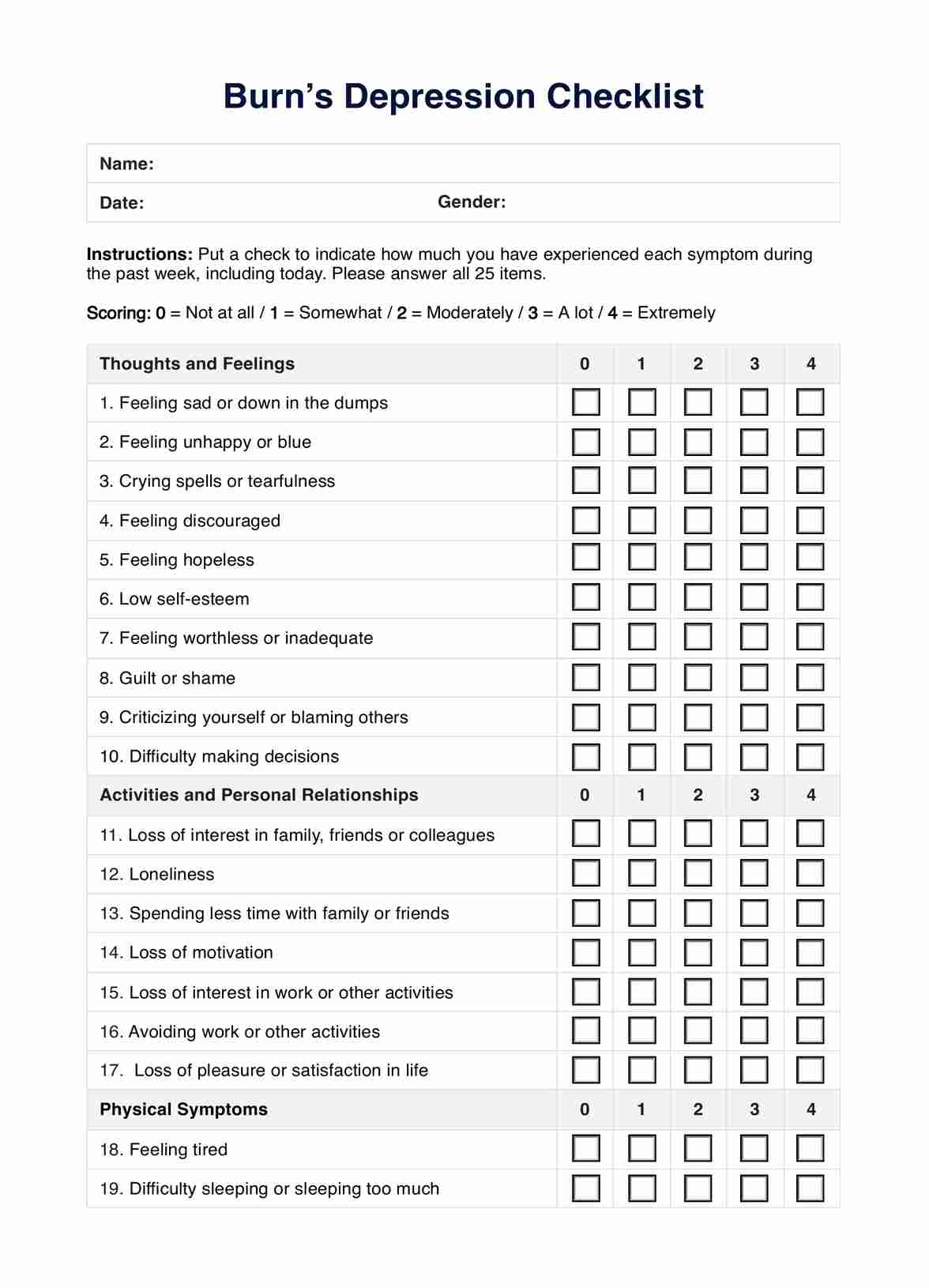Depressive disorders can affect anyone, no matter the age, gender, or background. However, it's essential to recognize that depression can impact individuals of all demographics.

Evaluate depression severity with the Burns Depression Checklist. Learn how to interpret findings and guide treatment decisions effectively.
Depressive disorders can affect anyone, no matter the age, gender, or background. However, it's essential to recognize that depression can impact individuals of all demographics.
If a patient struggles with persistent sadness, hopelessness, or loss of interest in activities they once enjoyed, it's crucial to seek help from a healthcare professional. Additionally, seeking assistance is advisable if these symptoms interfere with daily functioning or last for more than two weeks.
Overcoming major depressive disorder often involves a combination of treatments, including therapy, medication, lifestyle modifications, and support from loved ones. Consider working closely with a healthcare provider to develop a personalized treatment plan.
EHR and practice management software
*No credit card required
Free
$0/usd
Unlimited clients
Telehealth
1GB of storage
Client portal text
Automated billing and online payments